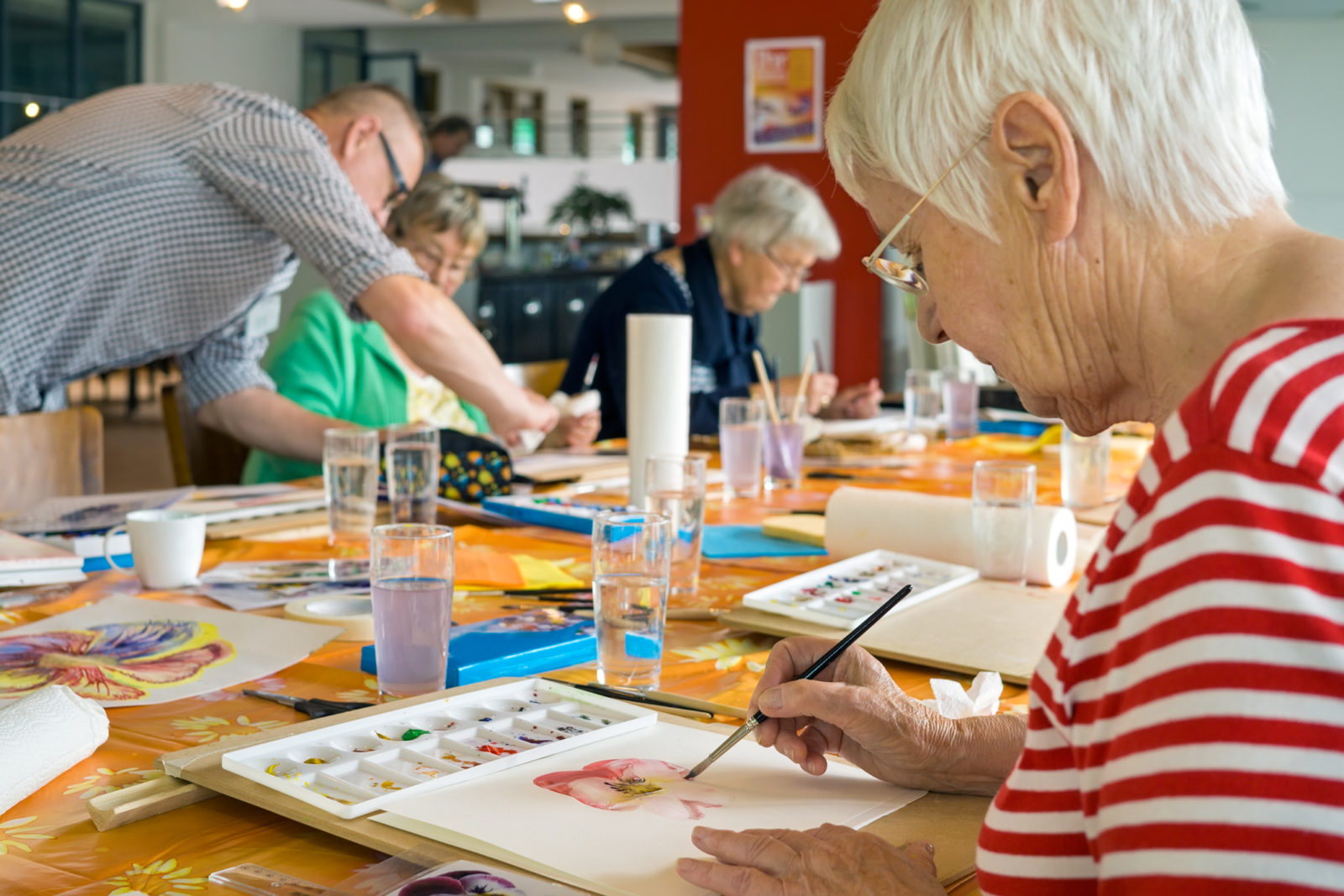Art Therapy Enriches the Lives of Those Living with Dementia

People living with dementia often have trouble communicating and connecting with others in ways they used to. Many caregivers are turning to the arts to help loved ones communicate in new ways – through painting, music and dance. Because the ability to create art draws from different parts of the brain than language, the arts can provide a powerful way to connect to the world.
Painting is becoming a very popular form of art therapy and was highlighted in the documentary film “I Remember Better When I Paint,” which depicts numerous instances of people living with dementia who have transformative experiences when they pick up a paint brush. A study published in the Canadian Journal of Neurological Sciences focused on Mary Hecht, a sculptor who was diagnosed with vascular dementia. She was able to draw detailed sketches and portraits, all from memory, of people she met or earlier drawings she had created. Artistic abilities, at least in some cases, seem to be preserved in spite of the loss of memory.
Music is another powerful medium. Studies have shown that music activates broad neural networks in the brain, including areas responsible for emotions and creativity. When used with those with Alzheimer’s and other forms of dementia, music can lift spirits and improve mood, reduce agitation, stimulate positive interactions, and promote cognitive function. Music provides a way to connect to someone, even after verbal communication has become difficult.
Singing has been shown to be particularly beneficial, especially in the early stages of the disease. A study at the Boston University School of Medicine discovered that people living with Alzheimer’s were better able to remember new information when it was provided in the context of a song. Interestingly, the study was also conducted on healthy older adults and, for them, there was no such benefit. Researchers at the University of Helsinki showed that singing helped enhance both cognitive skills and emotional well-being for those in the early stages of dementia.
It has long been known that for people of every age, the act of creating is life enhancing and nourishing to the human spirit. For those living with dementia, research demonstrates that participating in artistic expression provides many benefits:
Self-Expression / Validation
Creating something new allows people to announce “This is who I am. This is what I have to say.” Expressive art can provide vivid access to memories, and is a useful starting point for reminiscence and life review. The act of creating allows us another way to share our lives and receive validation for who we are.
Communication
People who have difficulty expressing themselves verbally are often able to communicate through visual means. For people living with dementia, autism or other conditions that create barriers to verbal communication, visual art can provide an alternative.
Intellectual Stimulation
The act of creating is a great way to exercise the brain. Deciding what media to use, what to draw or paint, and where to put the first line all provide mental exercise. An art project can represent a stimulating challenge to be met, increasing orientation and awareness.
Socialization
Visiting a museum or going to the theater allows people to have a shared experience and may induce them to share their feelings and emotions with others.
![PATHWAYS Care Solutions, LLC [logo]](https://www.pathwayscaresolutions.com/wp-content/uploads/sites/207/2016/10/logo-new-oct4.jpg)
![PATHWAYS Care Solutions, LLC [logo]](https://www.pathwayscaresolutions.com/wp-content/uploads/sites/207/2016/08/new-logo.png)